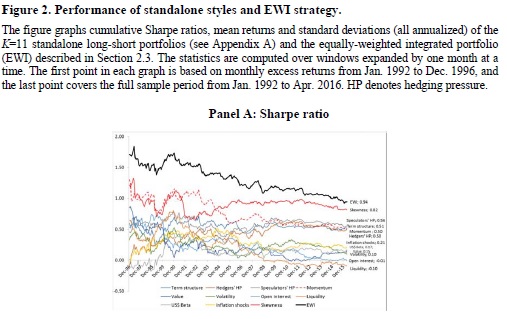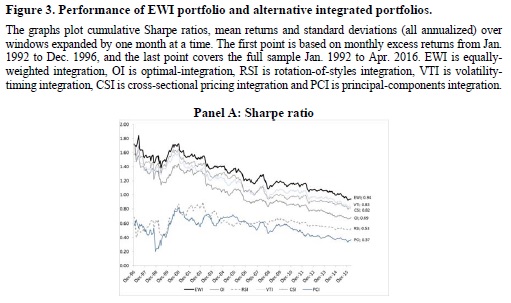How to Predict FX Carry Profitability
A new financial research paper related to:
Authors: Anatolyev, Gospodinov, Jamali, Liu
Title: Foreign Exchange Predictability During the Financial Crisis: Implications for Carry Trade Profitability
Link: https://papers.ssrn.com/sol3/papers.cfm?abstract_id=3029725
Abstract:
In this paper, we study the effectiveness of carry trade strategies during and after the financial crisis using a flexible approach to modeling currency returns. We decompose the currency returns into multiplicative sign and absolute return components, which exhibit much greater predictability than raw returns. We allow the two components to respond to currency-specific risk factors and use the joint conditional distribution of these components to obtain forecasts of future carry trade returns. Our results suggest that the decomposition model produces higher forecast and directional accuracy than any of the competing models. We show that the forecasting gains translate into economically and statistically significant (risk-adjusted) profitability when trading individual currencies or forming currency portfolios based on the predicted returns from the decomposition model.
Notable quotations from the academic research paper:
"The most signi…ficant departure from the lack of predictability of exchange rates has been documented in the carry trade literature. In a carry trade, an investor borrows in a low-interest currency and invests the borrowed funds in a high-yielding currency. A number of possible explanations have been advanced to account for the positive average returns of carry trade. In a classical asset pricing context, the positive average returns should refl‡ect compensation for bearing a (possibly time-varying) risk premium.
In this paper, we adopt a statistical approach to uncovering and exploiting potential predictability in carry trade returns during and after the recent U.S. Â…financial crisis. More specifically, we capitalize on the method proposed by Anatolyev and Gospodinov (2010) to decompose currency returns into two multiplicative components (sign and absolute returns) that individually exhibit much greater predictability than raw returns. We then model the joint conditional distribution of these components and use it to produce forecasts of future returns. We allow the two components to respond to currency-specifiÂ…c risk factors such as speculative pressure. This method of incorporating
any implicit nonlinearities in a ‡flexible, indirect fashion is motivated by:
(i) the limited success of linear asset pricing models in explaining carry trade returns
(ii) prior empirical evidence pointing to a statistically and economically signiÂ…ficant element of nonlinear out-of-sample predictability in foreign exchange markets especially at long horizons
(iii) the proÂ…tability of trading based on the decomposition model of Anatolyev and Gospodinov (2010) for equity returns.
Several interesting results emerge from our analysis.
– First, the decomposition model exhibits substantial directional accuracy in predicting carry trade returns during the recent Â…financial crisis.
– Second, the out-of-sample forecasting gains of the decomposition model (relative to the naïve historical mean and linear prediction models) translate into economically and statistically highly signiÂ…ficant profiÂ…tability.
We view the uncovered nonlinear predictability as a possible explanation of the limited success of linear asset pricing models in the context of currency markets. Note that the carry trade returns consist of two parts –future currency returns and interest rate differential –and while the pure carry trade strategies exploit only the differential in interest rates, both of which are near the zero lower bound over this period, we employ a model-based carry trade strategy that capitalizes on the predictability of currency returns. We allow the two components (multiplicative sign and absolute return components) to respond to currency-speci…c risk factors and use the joint conditional distribution of these components, modeled as a time-varying copula, to produce forecasts of future returns.
"
Are you looking for more strategies to read about? Check http://quantpedia.com/Screener
Do you want to see performance of trading systems we described? Check http://quantpedia.com/Chart/Performance
Do you want to know more about us? Check http://quantpedia.com/Home/About









